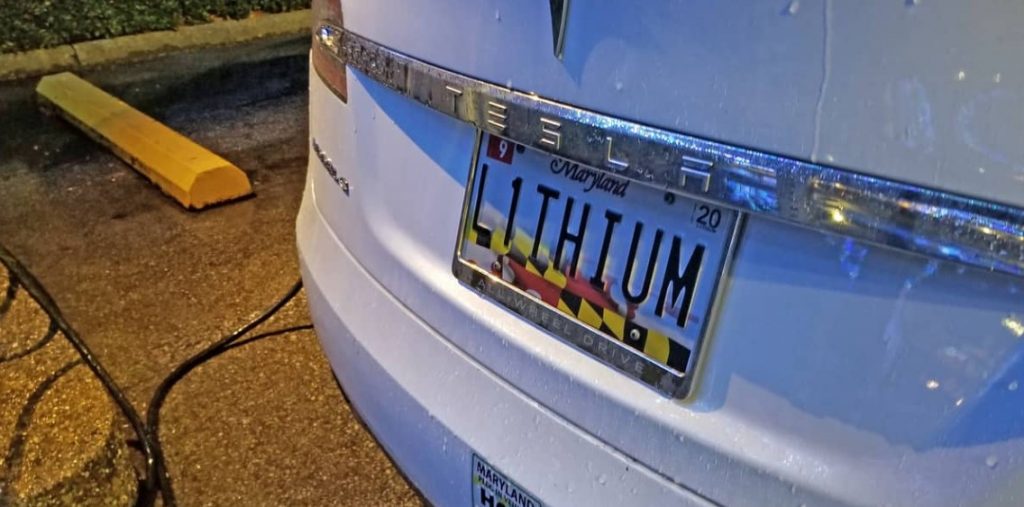What is lithium used for?
January 15, 2020 By News Team

Lithium is of the key metals driving the high-tech revolution. The light, silvery metal, found in hard rock mines and salt lakes, is a vital component of lithium-ion batteries, the technology that powers your cell phone, laptop and other electronic devices.
Lithium — also known as “white petroleum” — is the primary element in the larger batteries that charge hybrid and electric vehicles (EVs) as well, and as such is playing a dominant role in the industry’s transition away from fossil fuels.
“As battery technology improves, lithium is expected to play a key role in efforts to reduce carbon dioxide emissions that are responsible for global warming,” according to a U.S. Geological Survey report. Lithium’s “greatest potential for the most people” is in the form of these rechargeable batteries, the report states.
Where lithium comes from
There are two main sources of lithium: hard rock mines and briny lake deposits. About 87% of the world’s lithium comes from the salt lakes.
The remaining 13% comes from more traditional mines.
Extracting lithium from salt lakes is a more time-consuming process than traditional mining, but it costs about half as much as mining hard rock. As a result, brine mining is exploding, along with global demand for EVs and high-tech products.
What lithium is used for
About 56% of extracted lithium goes toward battery production.
The largest consumer of lithium-ion batteries is the EV industry, which accounted for around 64% of all such batteries in 2015 and 2016.
Thirty-six percent of lithium-ion batteries are used in portable electronic devices like cell phones and computers.
There are several reasons why lithium has become a metal of choice for makers of personal technology devices and electric cars.
Lithium is highly reactive; as a result, it easily conducts a current through a battery. Lithium is also much lighter than other metals used in batteries, such as lead. That means it is good for small objects such as phones, as well as for cars that require a lot of battery power. Last, lithium-ion batteries are rechargeable.
Automakers including Tesla, Honda and Toyota are all using lithium to power their electric cars.
Not all lithium is consumed by the tech and auto industries. Other sectors using lesser amounts of lithium include ceramics and glass and lubricating greases.
Global demand
As demand for EVs and other electronics booms, global production of lithium is expected to almost triple by 2025 to more than 1.5 million metric tons, according to a recent report by SPGlobal. Zion Market Research projects lithium-ion battery sales to grow at an annualized rate of 13.7%, rising to $67.6 billion by 2022.
So far, China, South America and Australia are dominating efforts to control this part of the EV supply chain.
Figures represent annual production, by country
1. Chile
Mine production: 16,000 metric tons (MT)
Reserves: 8,000,000 MT
2. Australia
Mine production: 51,000 MT
Reserves: 2,700,000 MT
One of the largest producers, Australia has been steadily ramping up production, bringing over 400,000 MT of new supply by 2025.
3. China
Mine production: 8,000 MT
Reserves: 1,000,000 MT
4. Argentina
Mine production: 6,200 MT
Reserves: 2,000,000 MT
5. Zimbabwe
Mine production: 1,600 MT
Multiple sources report China is looking to expand its lithium output to meet demand for its EV market, the largest in the world. The country has been buying up stakes in mining operations in South America and Australia. Earlier this month, Chinese lithium firm Youngy Co signed an agreement to build a lithium ore processing plant in Sichuan province to process at least 1.05 million tonnes a year of spodumene (a lithium mineral) from its Jiajika mine in Sichuan, China’s largest deposit of the mineral.
The U.S. produced just 3% of the world’s lithium supply in 2015, from the only commercial lithium mine in North America: a brine mine in Silver Peak, Nevada.
However, according to SP Global, three more — the Authier, Rose and Whabouchi mines — are set to come online in Canada before 2025, increasing North America’s share of the lithium supply by 5%.
Establishing a reliable, diversified supply of lithium has become a top priority for technology companies in the United States and Asia. The race is on.
